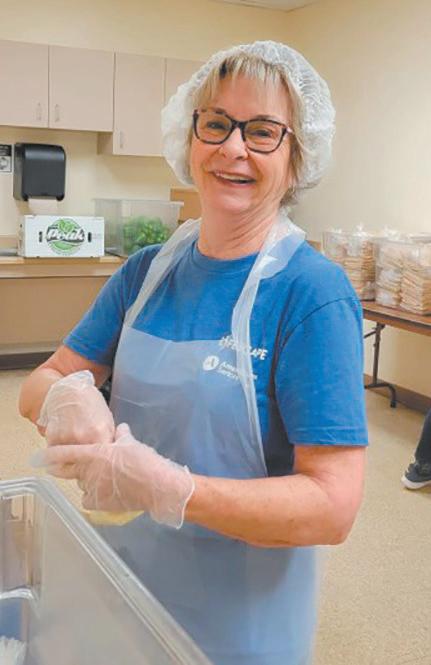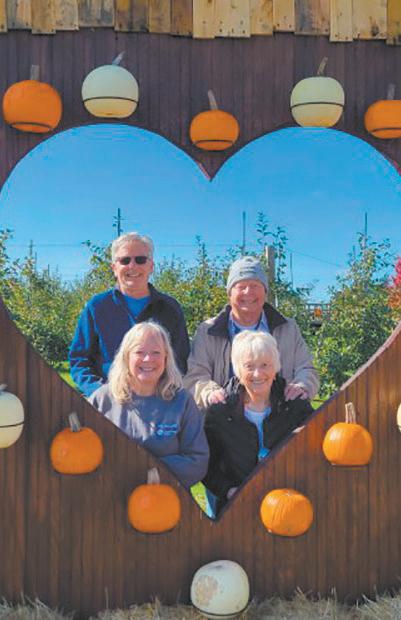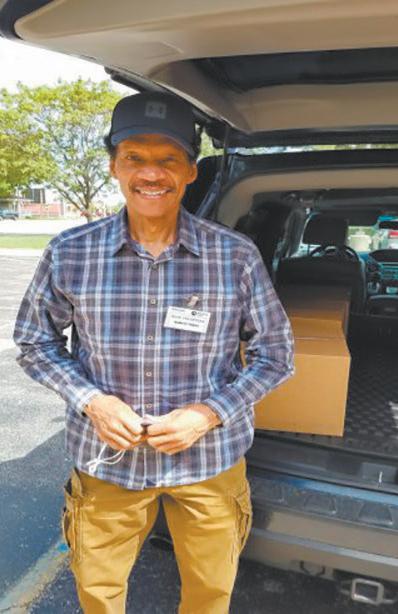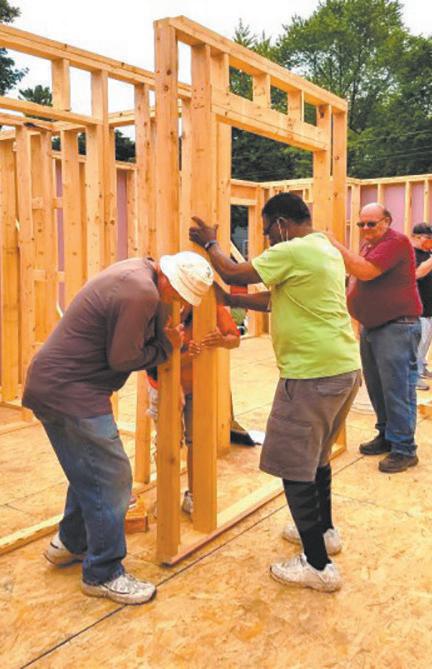




Palliative care is a specialized medical care approach focused on providing relief from the symptoms and stress of a serious illness. Its primary goal is to improve the quality of life for both the patient and their family. This type of care is appropriate at any stage of a serious illness and can be provided alongside curative treatment.






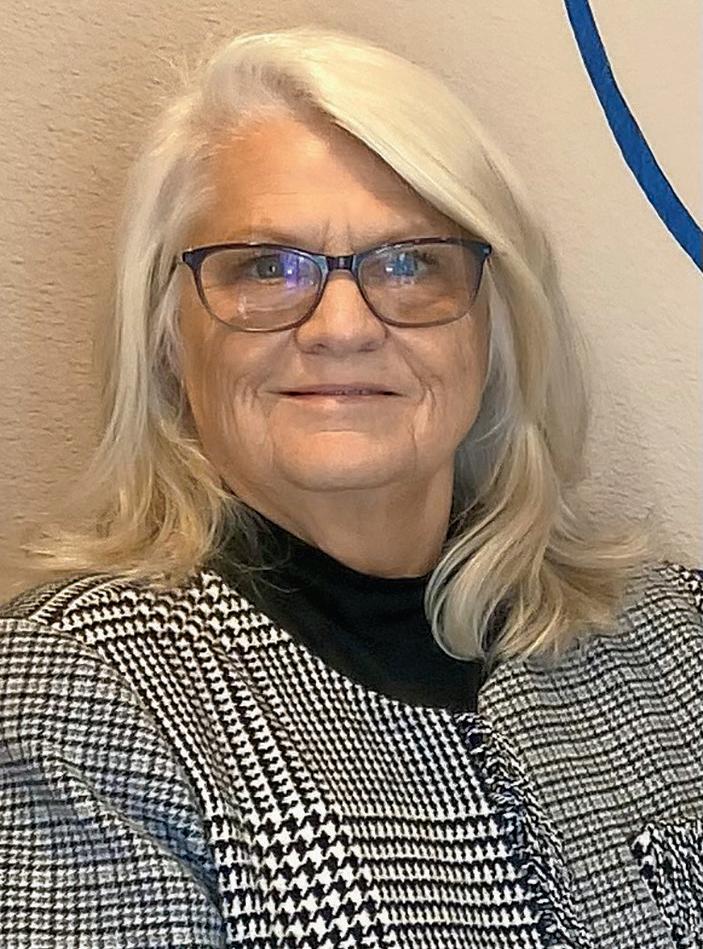
Kim Gaffey MSN RN
The concept of palliative care has its roots in the hospice movement, which began in the 1960s with the work of Dame Cicely Saunders in the United Kingdom. Saunders founded St. Christopher’s Hospice in London in 1967, which combined medical, emotional, and spiritual support for patients in the final stages of terminal illness. This pioneering approach emphasized the importance of pain management, compassionate care, and the dignity of the patient. Gaffey Home Nursing & Hospice recognized an unmet need in the Sauk Valley with Dr. Mir Alikhan 5 years ago. Many cancer patients were having symptoms needing professional management, for example iv hydration, pain and nausea management during and following chemotherapy. Care that previously required an emergency room or hospital visit and could be provided in the home with professional nurses limiting exposure for these cancer patients while on chemotherapy. The goal of palliative care is help alleviate a person’s suffering, reduce symptoms, and improve their quality of life over time. Palliative care helps people live their best lives for as long as possible. Since then, palliative care has evolved and expanded beyond hospices to become an integral part of healthcare systems worldwide. It is now recognized as a critical component of comprehensive care for patients facing lifelimiting illnesses, ensuring they receive holistic support tailored to their individual needs.


Palliative care is for individuals who are suffering from serious illnesses that significantly impact their quality of life. To qualify for palliative care, a patient does not need to have a terminal diagnosis, but they must be experiencing distressing symptoms that require specialized management. Palliative care is interdisciplinary, which means that it involves multiple types of doctors and other care providers. These providers at Gaffey include physicians, nurses, social workers, spiritual leaders, and other services as identified such as bathing services, physical therapy or occupational therapy, all focused on improving the quality of life while undergoing treatment for serious illness. Cancer is not the only diagnosis covered; any life limiting disease can be managed with palliative care. Palliative care differs from Hospice care. Palliative care can be provided while completing curative measures for the disease present. Hospice requires that life is limited to 6 months and no further curative treatment is offered. Palliative Care may lead to Hospice and Gaffey offers a transition program, so patients do not need to get all new staff, the nurses and caregivers are all cross trained to provide individualized care.
Various healthcare providers, including Medicare, Medicaid, private insurance companies, and sometimes even charitable organizations or hospices, may cover the costs associated with palliative care. In many cases, insurance plans will cover palliative care services if they are deemed medically necessary by a healthcare provider. Gaffey Home Nursing & Hospice utilizes Medicare and insurance for those covered. For those patients without coverage Gaffey offers care through the Gaffey Hospice Foundation, which pays for the care from donations and fund-raising efforts. No patient is turned away from Gaffey Home Nursing & Hospice.
For more information on Palliative care services, call Gaffey Home Nursing & Hospice Inc. 815-626-3467.




hen Tim Appenheimer retired as a doctor, he didn’t think he’d be spending part of his time making house calls.
But that’s just what he’s doing — only he’s not visiting them, he’s helping build them.
The veteran healthcare professional who put in four decades at KSB (now OSF St. Katharine Medical Center) recently joined up with the Dixon chapter of Habitat for Humanity, trading a reflex hammer for a claw hammer as he lends a hand building houses in his hometown.

Looking for something extra to do in retirement, Appenheimer began volunteering a year ago with the international Christian-based mission group that builds homes for individuals and families in need of a decent and affordable place to live. Dixon’s chapter builds one house a year and has built 32 so far, with groundbreaking on the 33rd planned for this spring.
Appenheimer is just one of many dedicated volunteers — many of them seniors — who lend their time and talents to adding more homes to their hometown. Most recently, they built a house on Jay Dee Avenue on Dixon’s southwest side last year.
Framing up a house and frame of mind can go hand in hand for retirees like Appenheimer, whose help with Habitat for Humanity projects gets them more involved in their community, helps them stay active, and introduces them to new skills.
HABITAT cont’d to page 4
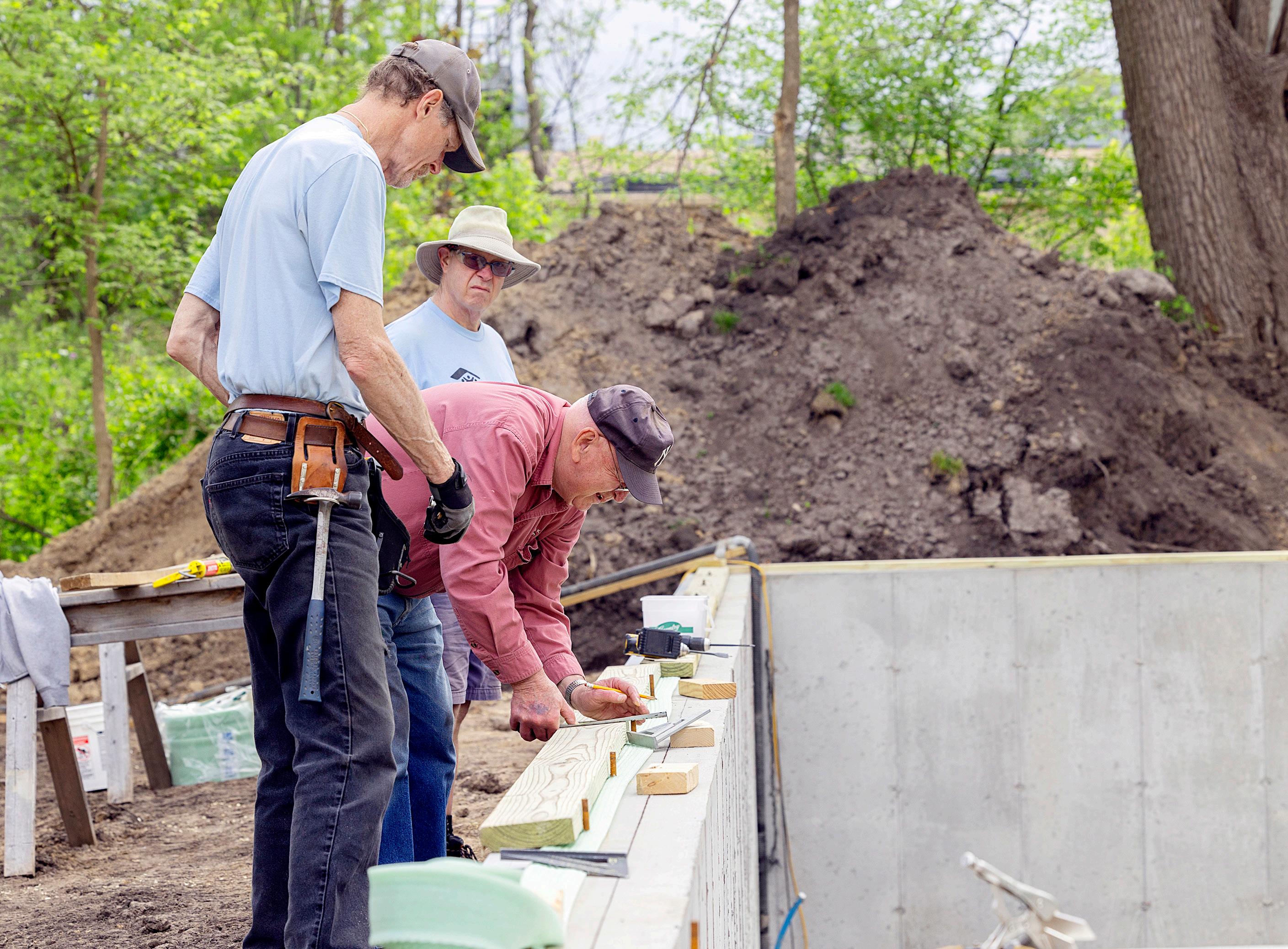
For the former doctor with his share of college degrees, there are still things to learn in life.
“My career was not mechanical or construction related at all, but I love going out there and hammering nails and working with the rest of the guys to learn about how a house is built,” Appenheimer said. “I came in relatively unskilled in this group, but that’s fine because there’s plenty of nails to be hammered and screws to be driven, and I can certainly do that.”
Already, Appenheimer’s looking forward to working on the next Habitat home, and it likely won’t be his last. He plans to stay at it for another couple of decades if he can.
“I figure by the time I’m 85, I will have worked with enough houses to learn how to do it myself,” Appenheimer said with a laugh.
Much of the work in building the houses is done by the chapter’s Band of Brothers, a core group of about 10 volunteers who include Appenheimer and Jeff Reglin, who’s volunteered with the Dixon chapter for six years. Along with the labor, Reglin — who retired from BorgWarner — enjoys getting to meet new volunteers and taking pride in the fact that the work he and his fellow volunteers do can change lives.
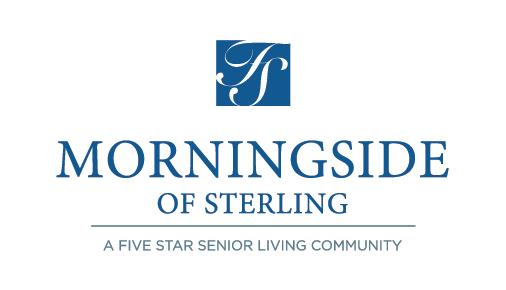
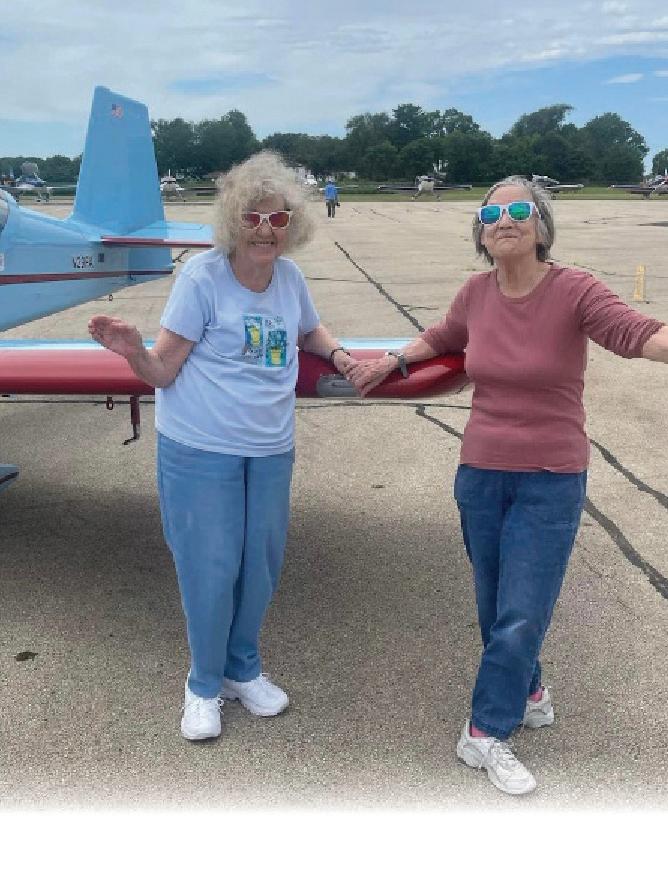




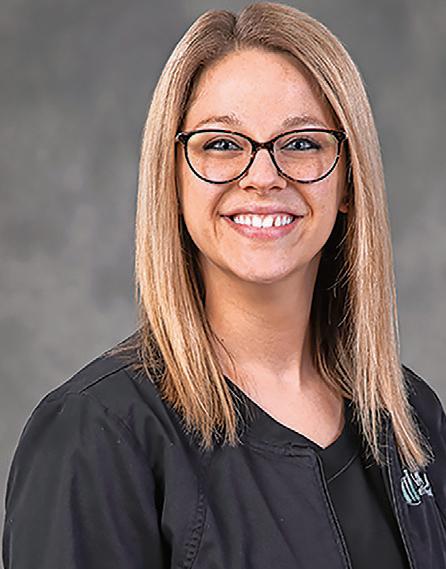
“I enjoy volunteer work and have done it for a number of years,” Reglin said. “Helping with the Habitat community, you’re not only helping the community, but you’re also helping an individual or a family start something and grow from that. Being a homeowner is pretty important these days, and making it affordable like Habitat does is pretty important.”
That word “affordable” is also important. Contrary to what some people think, Habitat homes aren’t free. People selected for a home pay for it, but through a more affordable payment plan (see “How it works on page 6 for details). Applicants go through a selection process, and if chosen, they have to put in 200 hours of “sweat equity” to help build the home.
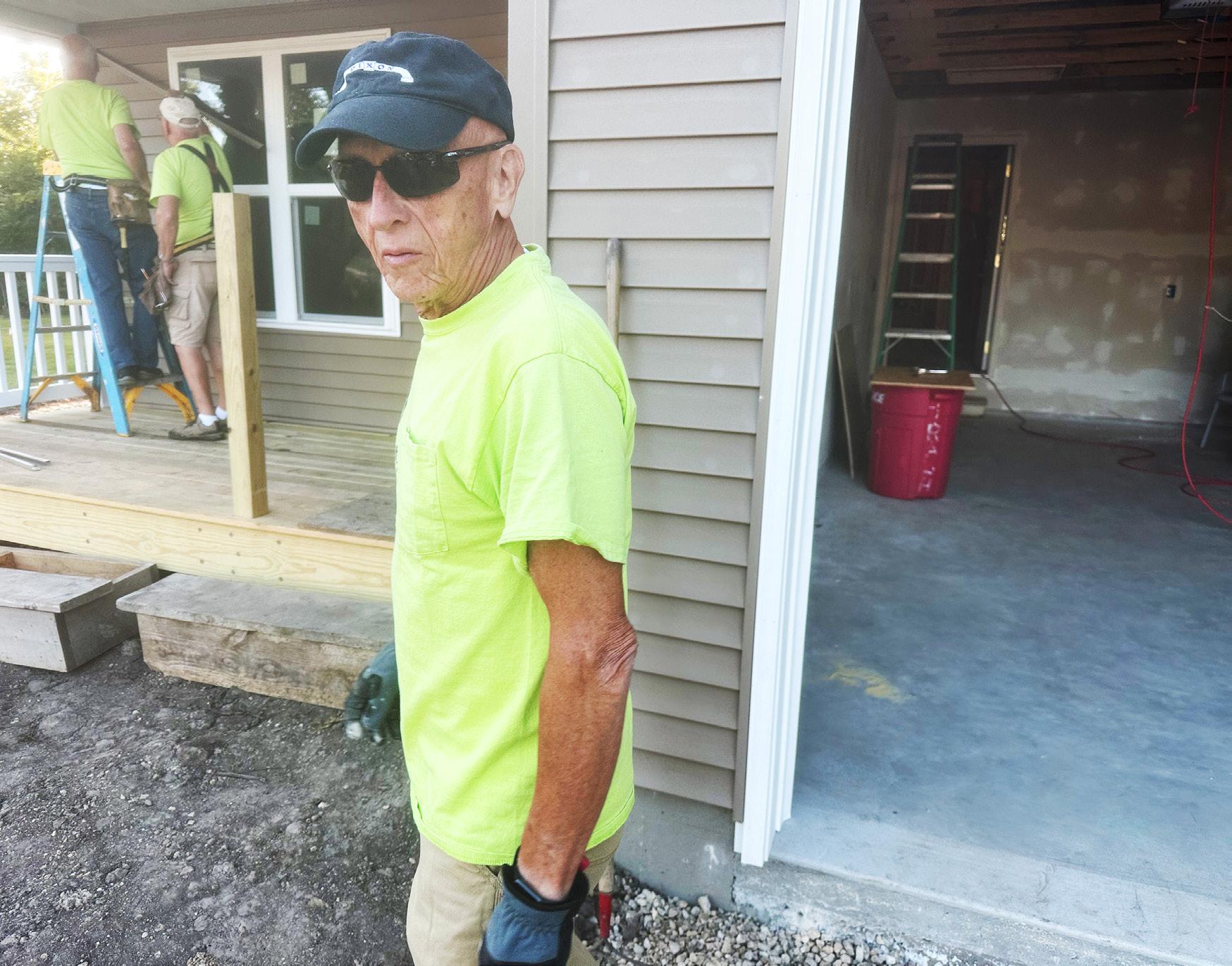

Dixon Habitat for Humanity has been building homes for low-income families in Sterling, Rock Falls and Dixon since 1992. Their 32nd, and most recent build, broke ground on May 4, 2024; it was awarded to Megin Steeb and her two children. Applications are generally taken during the summer, and the family is chosen by the homeowner selection committee during Dixon Habitat for Humanity’s annual meeting in November. Groundbreaking typically takes place the following spring. Applicants are chosen based on the following qualifying criteria ...
Level of need: Their income must be less than 80% of the median income level for Dixon. According to data provided by the United States Census Bureau from a 2022 American Community Survey of 5-year estimates, the median income level for a Dixon household was $52,208. Based on those figures, a qualifying household would need an income of under $41,766.
Families must also be currently situated in a less desirable housing situation. Some examples include living in a home in extreme disrepair, a home with no heat, or one without enough bedrooms for the number of occupants.
A willingness to partner with Habit for Humanity: All adult family members must agree to complete financial counseling courses and 200 “sweat equity” hours, in which they can help at the home’s construction site with cleanup, yard maintenance and other tasks. They may also be asked to help promote Habitat for Humanity programs.

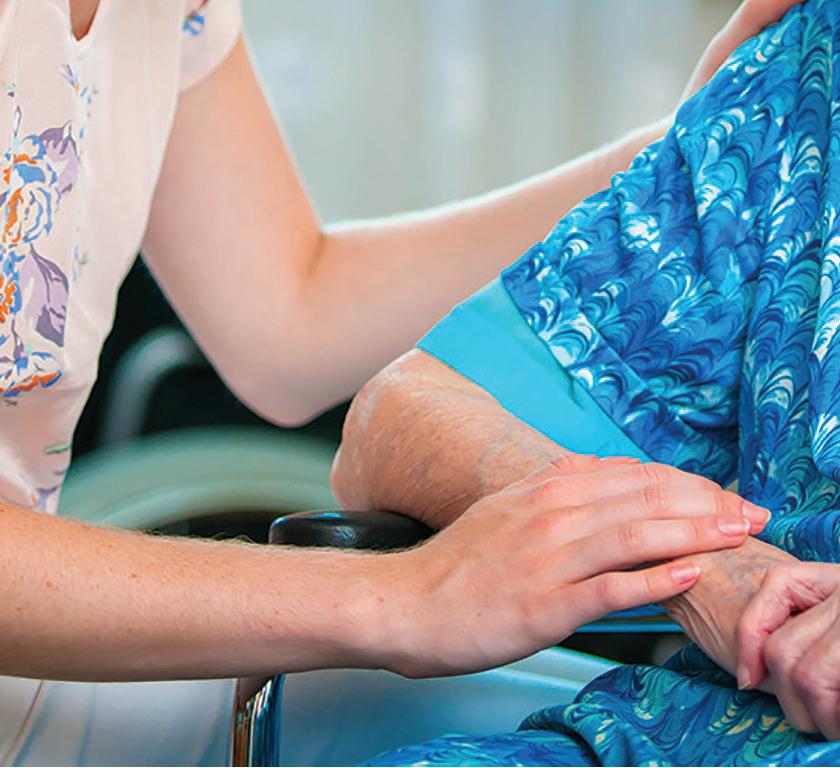
Ability to pay the mortgage: This is determined by a number of factors, including the family’s total income and the number of dependents and adults living in the home. Applicants’ total debt cannot exceed 40% of their gross monthly income. Additionally, the mortgage payment for the new home must be at least 20%, but no more than 30%, of their gross monthly income.
Homes are sold for market value following an appraisal, and families can apply for federal grants to assist with the down payment. Their mortgage is interest free, and families who qualify for less than the appraised value of the home are provided with a second option to cover the difference. Those conditions include making on-time mortgage payments, maintaining the home’s condition, and remaining a resident of the home during the duration of the mortgage. Should they fail to meet the requirements, the entirety of the second mortgage falls back on the family.
– Brandon Clark, Shaw Media
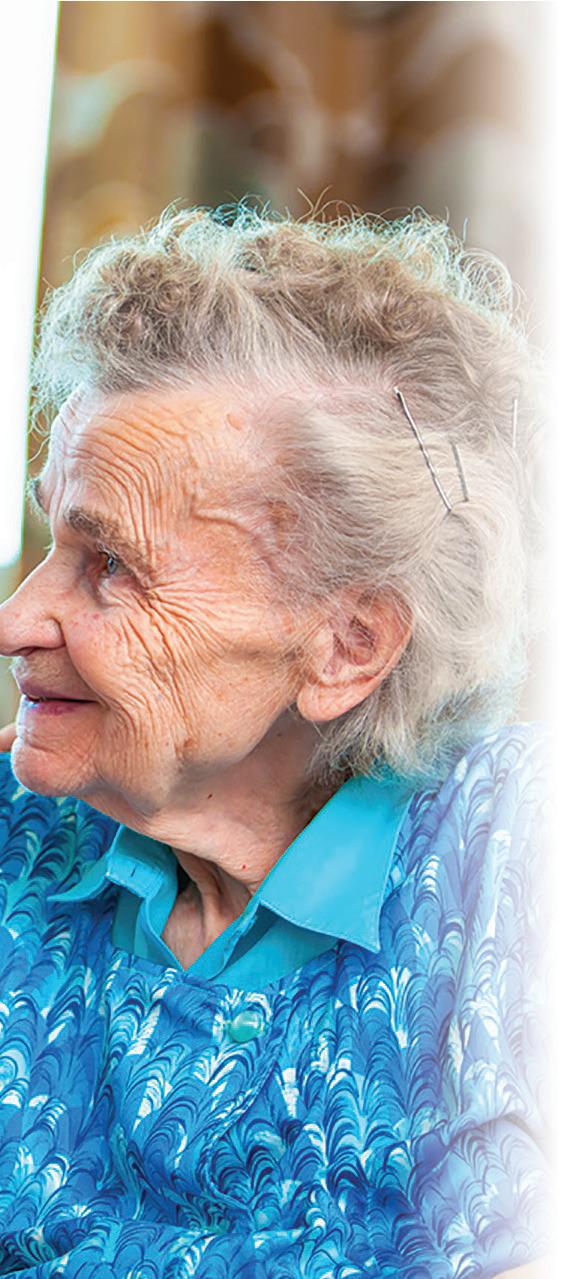
Short-term stays for respite or rehabilitation
Hospice care
Memory Unit
Professional, friendly, and caring health professionals
Private and semi-private rooms
Transportation for off-site appointments
Live entertainment, daily activities
Cable TV and Wi-Fi
Outpatient therapy services are available to the public
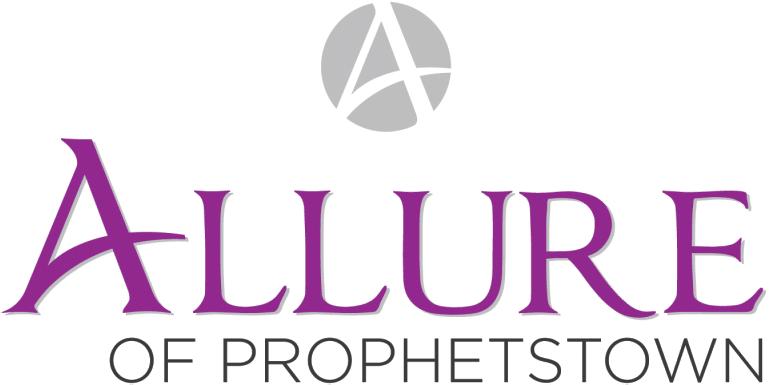


The American Dream team ... Members of Dixon Habitat for Humanity’s Band of Brothers construction crew pose for a photo while on break from last year’s construction project.

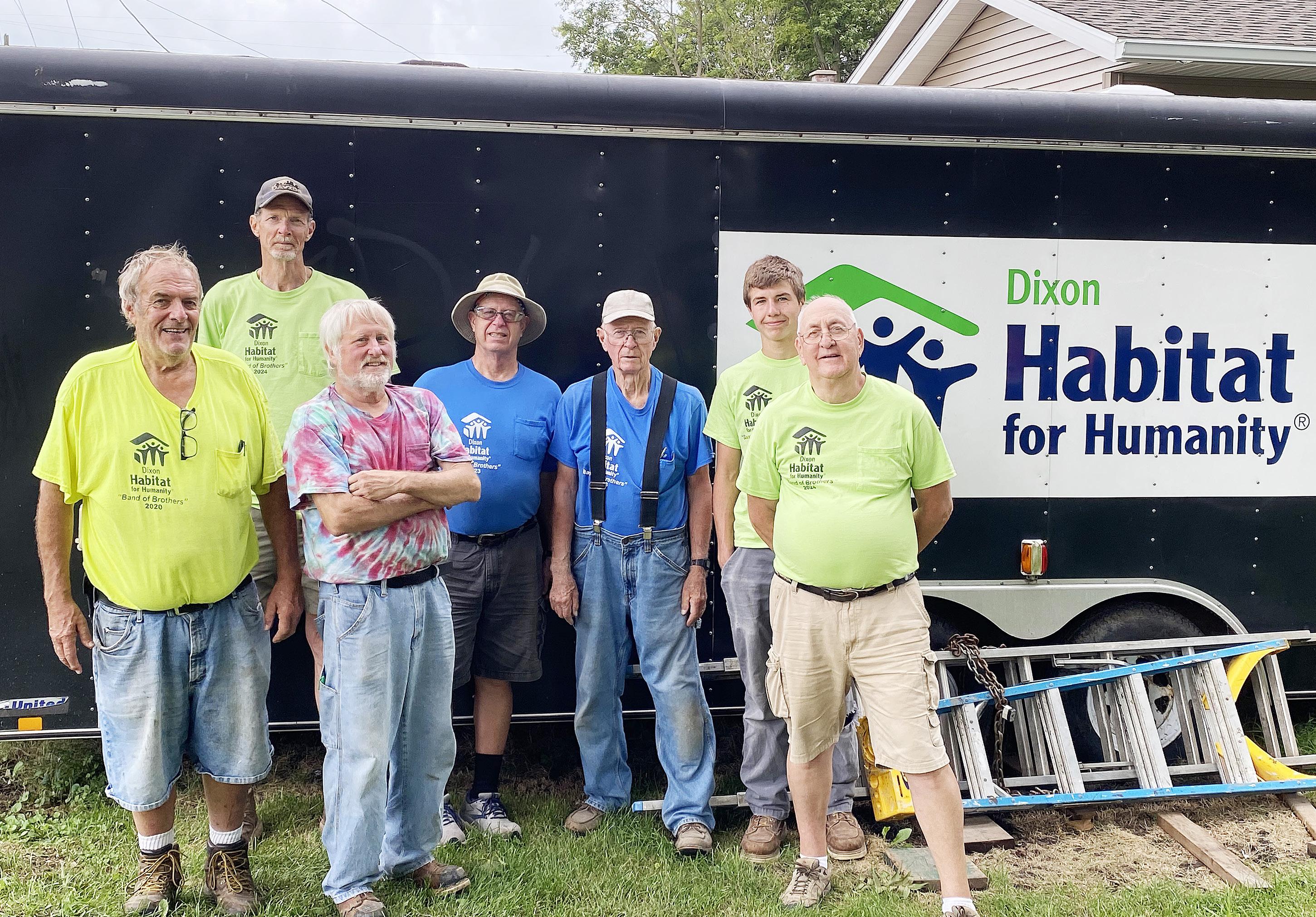
When Habitat volunteers lend a hand, it doesn’t have to have a hammer in it; they can help in others ways — financially, for example, or on the administrative side. That’s where David Spaulding does his work. The retired pastor of First Presbyterian Church in Dixon sits on the chapter’s board and is involved with the homeowner selection process.
Spaulding’s involvement with Habitat for Humanity began two decades ago when he was pastor of a church in upstate New York, and in 15 years of being a part of it, he’s seen many happy people become homeowners and many happy seniors become volunteers, enjoying being able to stay active and contribute to a good cause.
active and feel productive in some way, and not merely deciding to live for yourself,” Spaulding said. “I’m planning on being able to do things for another 20 years. It does matter to feel like, now that you have the time, to do some things that can make a difference in ways that you haven’t before. It’s an opportunity to use that time.”
For Spaulding and other volunteers, the homes are a testament to their dedication and commitment. They’ve often driven by past projects throughout town and take a moment to appreciate the difference they’ve made.
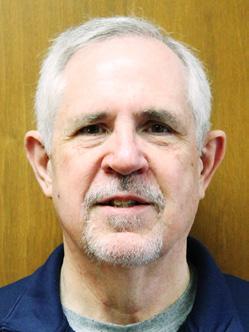
“They are very concrete, real signs that you’ve done something significant and lasting for somebody in their life,” Spaulding said. “As a pastor, there’s so much that you do and don’t see the results, or know if you made any difference, but seeing those houses and knowing that more than 30 families have had better lives because of the work that we’ve all done together, that, to me, really is it.”
Volunteers range in age from those who still work full-time to retirees well into their 80s, but they all have one thing in common: Helping Habitat for Humanity fulfill its mission of bringing people together to build homes, communities and hope.
“There’s a real commitment to the mission,” Appenheimer said. “We’re not cutting corners and making shoddy houses, we’re committed to doing it well and serving our homeowners well.” n
“It’s really important to stay
Shaw Media reporter Cody Cutter can be reached at 815-632-2532 or ccutter@shawmedia.com.
For more information on Dixon Habitat for Humanity, or to learn how to apply for a home, or volunteer,, go to habitat.org/ il/dixon/dixonhfh or find it on Facebook. It also can be reached by USPS at P.O. Box 11, Dixon IL, 61021.
Volunteering isn’t just good for your community, it’s good for your health
Volunteering makes an immeasurable difference in the lives of volunteers and those they help. Many people may be surprised to learn how positive it can be for volunteers. Indeed, studies show that volunteering leads to better physical and mental health, among other benefits.
According to an article published by the American Heart Association and Jeffrey Burr, a professor of gerontology at the University of Massachusetts Boston, “compared to nonvolunteers, volunteers have less depression, less anxiety, higher self-esteem, greater happiness, and a greater sense of meaning in life.” Burr and the AHA note the health benefits of volunteering occur among all ages, and a deep look at how volunteer efforts are good for personal health shows just how profound giving back can be.
Reduces stress — The Mayo Clinic reports that volunteering reduces stress and increases positive, relaxed feelings by releasing dopamine. When volunteers spend time in service to others, they report feeling a sense of meaning and appreciation, both of which can have stressreducing effects.
Lowers depression — Research has shown that volunteering leads to lower rates of depression and anxiety, particularly among people 65
and older.
Provides a sense of purpose — AmeriCorps reports volunteering can provide a sense of purpose in older adults, which can help replace feelings of inadequacy due to loss of major role identities, such as wage earner or parent. This sense of purpose can improve life satisfaction and happiness.
Reduces blood pressure — According to researchers at Carnegie Mellon University, older adults who volunteered for at least 200 hours annually decrease their risk of high blood pressure by 40 percent. This also may lower risk of heart disease and stroke.
Eliminates feelings of isolation — Volunteers working together link people to others and their communities. This can help people overcome feelings of isolation, which may come from being new to a community or being a senior and having a smaller social circle.
Increases happiness — Those who volunteer regularly tend to be happier and more empathetic towards others. Volunteering also instills a sense of pride that can make people happier.
Keeps the mind active — Individuals who volunteer can improve their cognitive health. That’s because volunteering engages a person in new skills, requires them to solve problems and keeps them mentally stimulated through various activities.
Improves physical health — Some volunteer activities will involve physical tasks that can contribute to improved physical health because they constitute moderate exercise.
Share your expertise — Established professionals with ample experience in a given arena can be particularly helpful with community initiatives. For example, experienced project managers can volunteer with local government offices and help to plan town-wide celebrations that bring locals and local retailers together. Experienced accounting professionals may volunteer with local senior centers to offer complementary or low-cost tax services to aging community members living on fixed incomes.
Help raise funds — Fundraising may not be the first activity individuals associate with volunteering, but charitable organizations must be able to continuously raise financial support to meet their missions. Volunteers can help organize fundraising events such as black-tie dinners with silent auctions that are both fun and fruitful for local charitable organizations.
Get behind the wheel — Various organizations, including local houses of worship and senior centers, help aging men and women get around town. Volunteer drivers make such efforts possible, so individuals who want to give back can offer to drive aging and/or immobile community members to religious services, weekly events like bingo night, or even offer to drive incapacitated neighbors to and from their doctor’s appointments.
Start a program for local youth — Adults with a passion for a particular hobby can share that love with local youths by volunteering to start a program or club that teaches young people the basics of a particular activity. For example, adults with a love of sailing can work with local township officials and develop a sailing instruction program for community youths. If reading is a passion, start a book club for teenagers that encourages them to discover their own favorite literary genre.
— Metro News Service
Pablo Picasso once said that every child is an artist — the problem is staying one when you grow up.
That shouldn’t be a problem in the Sauk Valley, where there’s no shortage of classes where seniors and other grown-ups can tap into their inner artist and get their creative juices flowing. Whether it’s painting, pottery or pencils, art is more than just a way to express yourself, it’s a great opportunity to get out of the house and exercise your creative muscles. Through art, you can meet new people and discover new talents, give your spirits a lift and your confidence a boost. It can capture a moment in your mind or free you from the weight of a difficult emotion.
Studies have shown myriad benefits to being creative, and with so many options locally, you don’t have to go far to find a place to sign up for those benefits. There are classes for almost all ages and interests — children to adults, canvas to clay and more. So what are you waiting for? Find your inner Picasso and take him with you to one of these classes …
ART cont’d to page 10

Located at the former Woodlawn School, Woodlawn Arts Academy, 3807 Woodlawn Road in Sterling, has offered classes in a wide range of fine arts since it opened in 2006. At right is al list of what it has to offer for summer adult art classes.
Additional summer programs offered in culinary and other fine arts include planning summer picnic favorites, a one-day cooking principles culinary workshop, adult ballet basics and beginning guitar lessons.
Registration starts at 7 a.m. April 28 at woodlawnartsacademy.com, and 9 a.m. that day in person. Private lessons in all genres of art also are available. Go to the website or call 815-626-4278 to register, costs, or for more information.

Open pottery: 6:30 to 8 p.m. Wednesdays from June 4 to July 23 — Projects are chosen and led by students as they get to continue practicing potter techniques. Ages 10 and older.
Adult pottery: 6:30 to 8 p.m. Tuesdays from June 3 to July 22 — An introduction to ceramics and technique using both hand-built and wheel methods. Projects are instructor directed. Ages 13 and older.
Adult drawing workshop: 10 a.m. to noon Saturday, June 21 — Want to learn or perfect some drawing skills? Come with your own ideas or get help getting started. Gain knowledge to improve your drawing skills. Ages 12 and older.


Beginning acrylic painting: 9 a.m. to noon Saturday, July 19 — Discover and review the basic techniques of acrylic painting, such as blending, texturizing, brush handling and detailing; and learn what products to use to paint at home. Follow-up workshops are available, inquire during registration. Ages 12 and older.









Established in 2004, The Next Picture Show, 113 W. First St. in Dixon, is an art gallery that hosts events throughout the year, and offers art workshops and classes taught by area award-winning artists. The gallery offers two art classes conducted in six-week cycles (info at right). Go to nextpictureshow.org/classes for costs and registration forms, or call 815-285-4924 for more information.
Oil and acrylic painting: 5:30 to 8 p.m. Tuesdays — This class encourages beginners, as well as more experienced artists wanting guidance finishing their oil and acrylic paintings. The class consists of instruction and discussion, as well as time to implement what is taught. For ages 16 and older, or for experienced students who are younger.
Beginning and intermediate watercolor painting: 10 a.m. to noon Wednesdays — From paints and palettes to brushstrokes and paper, this course provides students with essential information and techniques they need to help them create their own works of art. For ages 16 and older, or for experienced students who are younger.
The Business and Community Education program at Sauk Valley Community College, 173 state Route 2 in Dixon, has been around for more than 40 years, and encompasses courses in career training, skill sets and arts. It also offers regional and international destination trips, such as ones this past semester to Chicago and Iceland.
Below is a list of what the college has to offer for upcoming community education art classes. Other community education courses offered this spring include computer skill classes, line dancing, retirement planning and autobiographical writing.
Go to svcc.edu/community/community-education and svcc.edu/commedenroll for costs and to enroll. Call 815-835-6258 for more information.
From Monet to Warhol: 5 to 7 p.m. Mondays from March 17 to April 21 in Room 2K9B — The class, which features many prominent artists, combines art history and art making. Students can create drawings and paintings inspired by impressionism, surrealism, abstract expressionism and pop art. Supplies are included. For ages 14 and older.
Multimedia drawing and painting: 5 to 7
p.m. Wednesdays from March 19 to April 23 in Room 2K9B — This class explores the mediums of drawing, painting and collage. All skill levels are welcome. Supplies are included. For ages 14 and older.
There’s more to senior centers than just meals and Medicare tips. They offer a whole host of activities, including creative ones (listed at right). For more information, call or e-mail them, or check their websites and Facebook pages. You can also check the Golden Echo, published the last Wednesday of the month in the Gazette and Telegraph, for a listing of their classes and events.
The Whiteside County Senior Center in Sterling hosts Learn to Quilt classes with its quilting group from 1-3 p.m. Mondays, and meetings of its Knitting Club from noon-3:45 p.m. Tuesdays. The Center also recently added an Intro to Painting class to its events. Participants are invited to the Center at 10 a.m. on Wednesdays for canvas painting with a host who has a background in painting.
The Whiteside County Senior Center, 1207 W. Ninth St., is open 8 a.m. to 4 p.m. Monday through Friday. For more information, call 815-622-9230, e-mail info@wc-seniorcenter.org, go to wc-seniorcenter. org or find “Whiteside County IL Senior Center” on Facebook.
The Lee County Council on Aging in Dixon hosts monthly meetings of the Writers Group on the third Monday of the month. Aspiring writers and skilled wordsmiths are invited to the dining room at LCCOA to share short stories, essays, poems and other works.
The Lee County Council on Aging, 100 W. Second St. in Dixon, is open 9 a.m.4:30 p.m. Monday-Friday. For more information, call 815-288-9236, e-mail info@leecoaging. org, go to leecountycouncilonaging.net or find Lee County Council on Aging on Facebook.
Shaw Media reporter Cody Cutter can be reached at 815-632-2532 or ccutter@shawmedia.com.







The value of hobbies is undeniable. A 2014 study published in the Journal of Occupational and Organizational Psychology found that employees who engaged in creative hobbies outside of work were more creative on work projects and had a better attitude on the job, while a separate study published in Psychosomatic Medicine in 2009 reported that individuals who engaged in enjoyable leisure activities had lower blood pressure and a smaller waist circumference.
The myriad benefits of hobbies is good news for seniors, many of whom have ample time for leisure activities. Whether seniors are retired or still working but free from the responsibilities of parenting, the
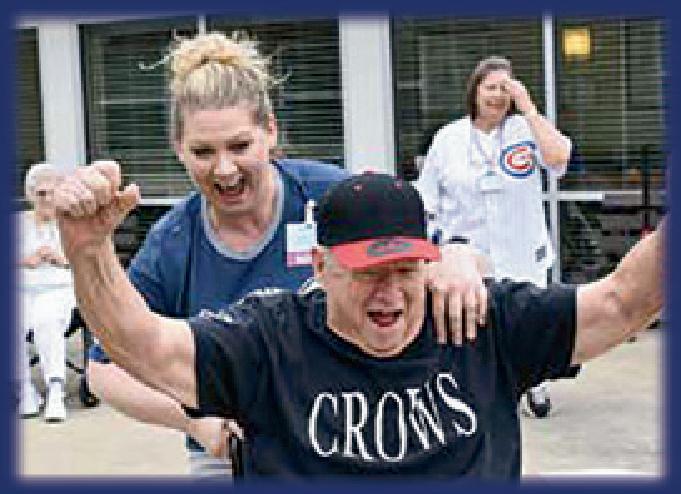
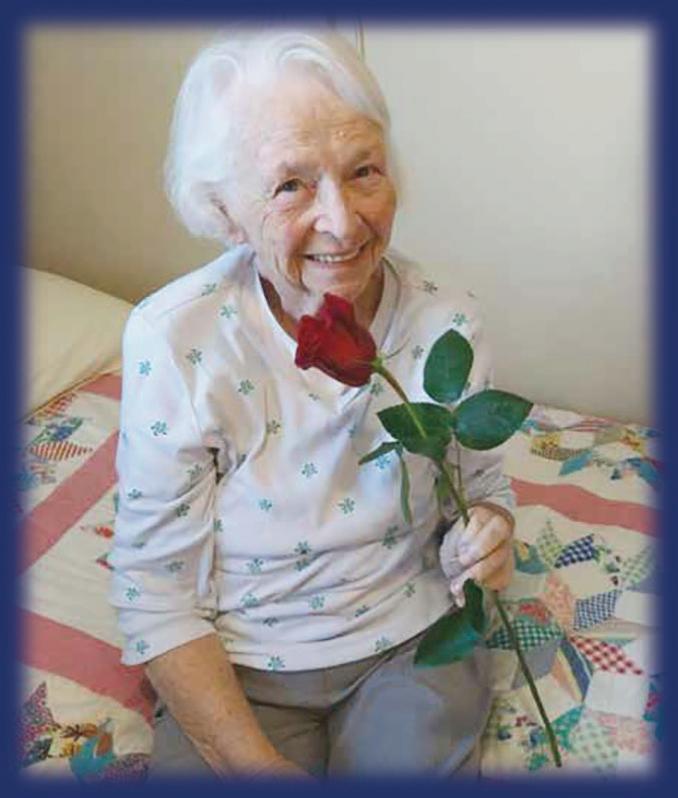
following activities are some fun and engaging hobbies to fill that free time.
Cooking: Years spent hustling and bustling through the daily grind of personal and professional obligations might have forced individuals to embrace cooking that emphasized convenience over culinary skill. Now that there’s more time to embrace one’s inner Emeril, seniors can look to cooking classes or take the self-taught route and purchase a new cookbook filled with delicious recipes. A well-cooked homemade meal can provide a sense of accomplishment and affords seniors an opportunity to control the ingredients in the foods they eat, which can be important for those with healthrelated dietary restrictions.
Writing: Many successful people have penned their memoirs after long, notable careers and lives. While you don’t necessarily need to follow suit with the goal of making your memoirs public, writing can be a great way for seniors to document their own lives and the lives of their families. Interest in genealogy has risen considerably in recent years, as easily accessible websites like Ancestry.com and 23andMe.com have made it easier than ever for individuals to learn where they came from. Seniors can contextualize the information provided by genealogy websites by writing about their personal experiences and sharing what they know about the lives of their parents, siblings, grandparents, and other family members.
Gardening: Seniors looking for hobbies that get them out in the great outdoors need look no further than their own backyards. Gardening can benefit the body in myriad ways. According to the Mayo Clinic Health System, gardening can burn as many calories as working out in the gym. In addition, the MCHS notes that individuals who grow their own fruits and vegetables are more likely to include those foods in their own diets, thus saving them money at the grocery store and also increasing their intake of nutrient-rich foods.
Swimming: Swimming is an ideal exercise for seniors, as it’s low-impact but still a great way to utilize the entire body. A 2007 study published in the journal Quality of Life Research found that water-based exercise improves older adults’ quality of life and decreases disability. A separate study published in 2008 in The Journal of Sports Medicine and Physical Fitness found that water-based exercise can improve or help to maintain bone health in post-menopausal women.

• Continuum of Care All Under One Roof
• Not-for-profit Christian Home
•All Private Rooms
•Now VA Contracted
• Medicare Certified Skilled Care, Assisted Living Apartments and Long-term Nursing Care
•Hospice Suite
•Gorgeous, Spacious Chapel
•Excellent Nutritious Meals
•Community Centered
only two assisted livingavailable!apartments
• Lovely Walking Path and Raised Gardens
• Wonderful Library and Sharing Library
•Fun, Diversified Activities
• Comprehensive Infection Control Protocols NOW VA CONTRACTED
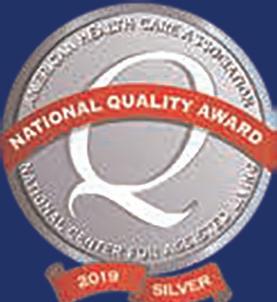



Resthave
o you enjoy reading a good book? Well, join the club.
Fact and fiction, action and adventure, reference books and romance novels — the possibilities in pages are endless. We can go anywhere we want from the comfort of a cozy chair. Writers can be like travel agents, booking us on trips near and far, through time and space. They can touch our hearts
and minds, making us laugh and cry or helping us find the answers to “Why?”
With so much captured between the covers of a book, it’s easy to see why people like to read. But once you’ve closed the book on your latest literary journey, wouldn’t it be nice to talk about your trip — compare notes and see what your fellow travelers thought? CLUBS cont’d to page 15
CLUBS cont’d from page 14
Look no further than your local library, where book clubs can help people expand their literary horizons and take a deeper dive into what they’re reading, exploring books, sharing different perspectives, and shedding new light on those works of words. Book clubs also serve practical purposes: You can brush up on the art of discussion, sharpen your critical thinking, and improve your social skills. Members of all ages can explore different interpretations, analyze themes, and discuss characters and plot lines from various perspectives. Each person brings their own life experiences and insights, making the discussions multifaceted and often revealing new ways of thinking about a book. Through all of that, members can also help introduce one another to other books that they may not have otherwise read.
Libraries in Sterling, Rock Falls and Dixon have book clubs that meet on a regular basis.
CLUBS cont’d to page 16












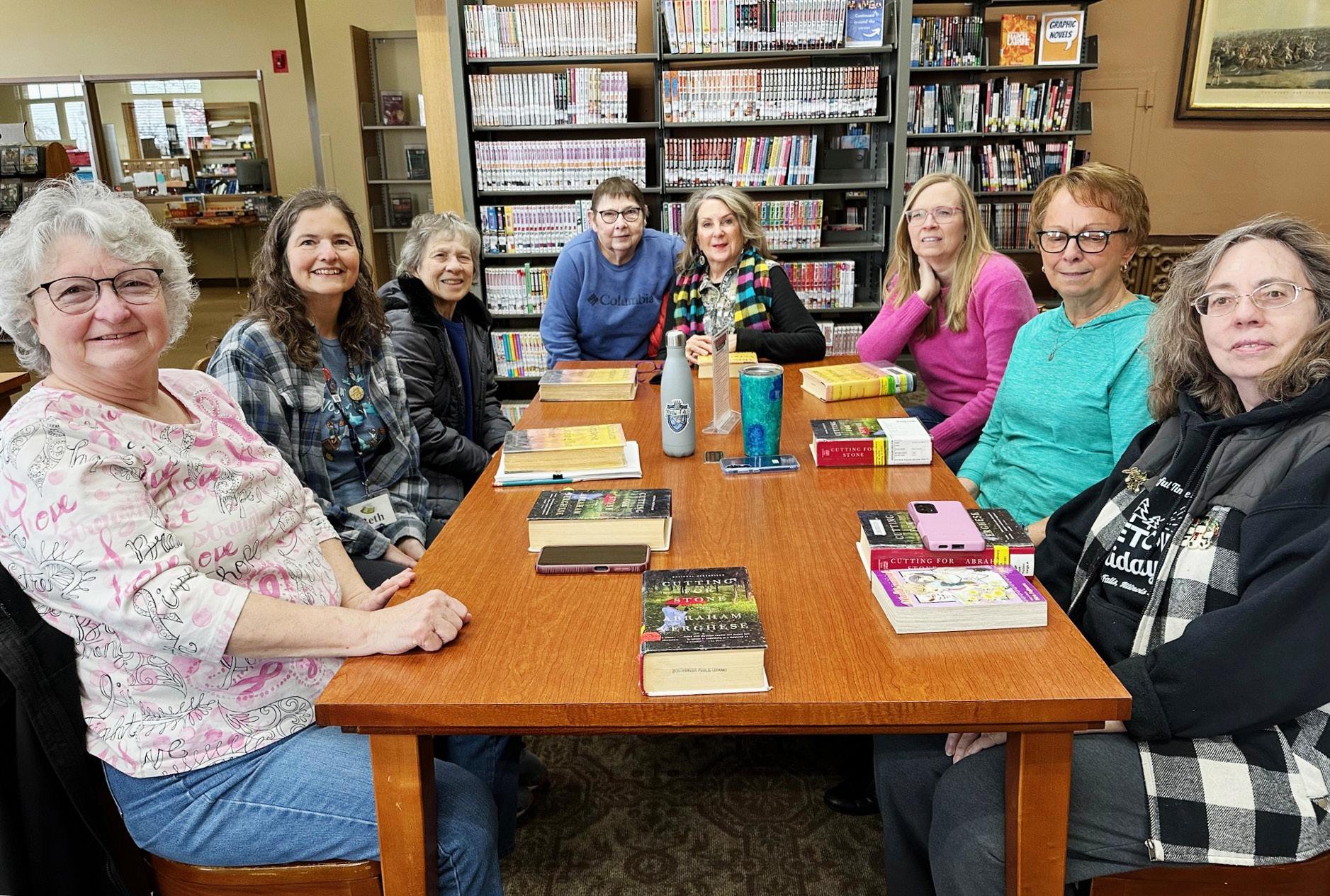
Members of Sterling Public Library's Friday Morning Book Club meet from 10 to 11 a.m. on the second Friday of each month at the library. February’s book of discus sion was “Cutting for Stone,” by Abraham Verghese.

CLUBS cont’d from page 15
Sterling Public Library has three book clubs that meet once a month at the library. Its Monday Night Book Club meets from 5:45 to 6:45 p.m. on the second Monday of the month. The Friday Morning Book Club meets from 10 to 11 a.m. on the second Friday of each month.
“There is no set theme or genre that we specifically target when choosing the books for those clubs,” librarian Beth Dettman said. In the first half of the meeting, they discuss the book they’ve just read, and in the second half they go over the next book they’ll read.
The other book club at Sterling is the Adults Reading Kids Stuff (ARKS) Book Club, which meets from 6 to 7 p.m. on the final Tuesday of each month. This club is for adults, but they read books written for teens or children.
Books to be discussed in the clubs are determined ahead of time on the library’s Facebook page.
“Library book clubs are a fantastic way for not just seniors to stay active physically and mentally, but for people of all ages,” Dettman said. “Each of the book clubs discusses their chosen book, but often has wider discussions about past life experiences, country/world topics, or any number of subjects that may relate to the book just finished.”
CLUBS cont’d to page 17
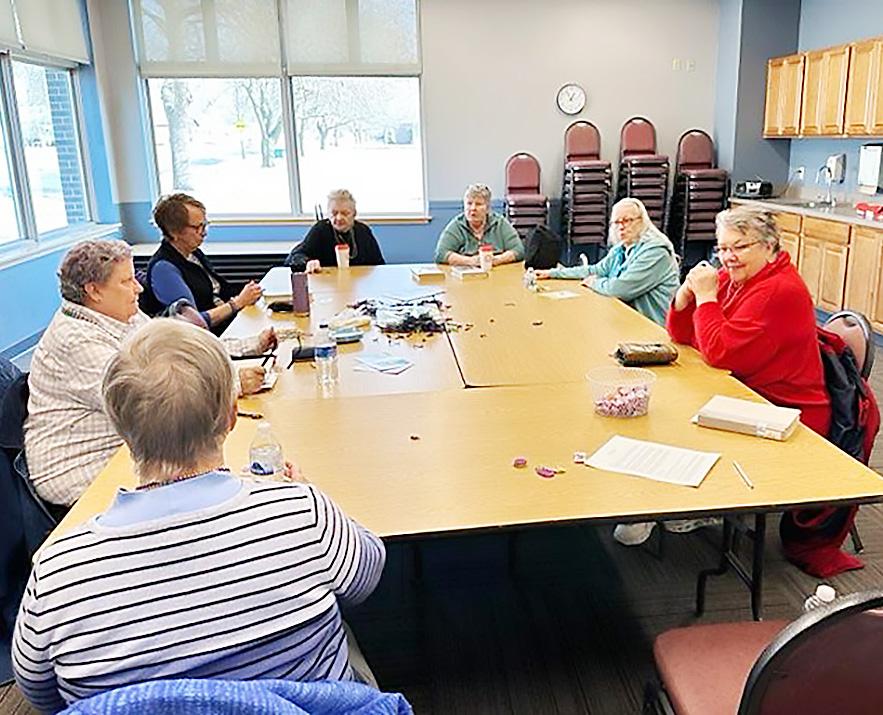
SUBMITTED
Members of the Rock Falls Public LIbrary’s book club discuss a book during a recent meeting.
CLUBS cont’d from page 16
Rock Falls Public Library has two book clubs that meet there, one at 1 p.m. the first Monday of the month, and the other at 6 p.m. the second Monday. Books to be discussed are determined ahead of time on the library’s website and Facebook page. Members can suggest books that can be discussed, library director Amy Lego said.
“The book clubs are all very relaxed, with no test questions,” Lego said. “You don’t have to like all the books we read or finish the books if it’s not your cup of tea.”
Dixon Public Library also has three book clubs.
Monday Morning Mysteries meets at 10:30 a.m. on the fourth Monday of the month, and discusses, as its name suggests, mysteries. Literary Merits, the library’s original book group, meets at 2 p.m. on the fourth Tuesday of each month, and discusses literary fiction and nonfiction. There’s also a club geared toward those interested in contemporary fantasy and science fiction, the Orbital Book Group, which meets at 6 p.m. on the fourth Tuesday. The three clubs all meet together for its November meeting.
Books discussed at the Dixon library groups are determined months in advance, and are listed on the library’s website. Librarian Shelly Franz said she’s heard from several members about how being in a book club has diversified their reading and broadened their horizons after engaging with like-minded readers.
CLUBS cont’d to page 18
Aging and change go hand in hand. Although some may bemoan the gray hairs that start to arrive or stiffness in the knees that seems to sneak up on a person in middle age, such concerns are not necessarily enough to lose sleep over. However, many people 50 or older are nervous about the potential for cognitive issues like dementia as they grow older.
The Alzheimer’s Association estimates that 6.7 million people have Alzheimer’s disease in the United States. Alzheimer’s disease and other dementias can rob people of their memories, personalities and abilities to live satisfying, independent lives. While it may not be impossible to prevent all cognitive issues completely, there is reason to believe that reading could be an ally in cognitive care.
The American Academy of Neurology says that reading stimulates the brain and has been shown to slow down cognitive decline in old age. Reading also may help slow down memory loss. The powers of reading were noticed more than 10 years ago when a 2013 study from researchers at Emory University measured readers’ MRI scans as they read books. They found the deeper readers went into a story, the more areas of their brains were activated. This activity remained elevated for several days after participants finished their books. The more a person reads, the stronger complex networks in the brain become.
Additional evidence that reading can help the brain was noted by researchers at the Texas A&M School of Public Health. A 2024 study suggests that older people with mild cognitive impairment who engage in high levels of activities like reading, hobbies and word games have better memory, working memory, attention, and processing speed than those who do not take part in such endeavors. Furthermore, a 2021 study published in Neurology found that high levels of cognitive activity, like reading and writing letters, can delay the onset of Alzheimer’s disease by five years among those age 80 and over.

CLUBS cont’d from page 17
The discussions help people find common ground, even if they happen to disagree on plot points or concepts in the books being discussed,” Franz said. “The library book groups are great for meeting new people in town. We have friendly members and our groups tend to end up with the members as friends, even if they didn’t know anyone when they started participating in the groups.”
Want to get a head start on reading? February’s books discussed in Sterling were “The Violin Conspiracy,” by Brenden Slocumb and “Cutting for Stone,” by Abraham Verghese; and the ARKS club discussed “Twenty-Four Seconds from Now,” by Jason Reynolds. Those in Rock Falls were “The Nightingale,” by Kristin Hannah and “All the Light We Cannot See,” by Anthony Doerr. In Dixon, Monday Morning Mysteries talked about “Under Lock and Skeleton Key,” by Gigi Pandian, and the Orbital Book Group chatted over “Starter Villain,” by John Scalzi.
Book clubs can be social groups where people can share feelings and reactions to what they’ve read, being an emotional outlet where they can bond over stories that resonate with them. Discussions about each book’s plot, themes, characters, and author’s intentions helps readers develop critical thinking and analytical skills, and can encourage deep reflection rather than just reading for leisure. Whether you’ve been a solo reader who’s looking to turn the page on your habit and talk books with other people, or you’re a full-on bibliophile who’s never at a loss for words, local libraries invite you to stop by and check out their book clubs.
“Everyone takes something different away from the books we read and discuss,” Lego said. “Everyone has a different perspective based on their own life experiences and that brings some great discussions.” n Shaw Media reporter Cody Cutter can be reached at 815-632-2532 or ccutter@shawmedia.com.
Dixon librarian
Shelly Franz (left) leads a discussion during a meeting of the library’s Literary Merits book club on Feb. 25, at the library.
Sterling Public Library
102 W. Third St., sterlingpubliclibrary.com or Facebook; email teen librarian Beth Dettman at beth. dettman@sterlingpubliclibrary. org, adult services librarian Ben Knapp at ben.knapp@sterlingpubliclibrary.org, or children’s librarian Abbigail McWilliams at abbigail. mcwilliams@sterlingpubliclibrary.org or call 815-625-1370.
Rock Falls
Public Library
1007 Seventh Ave., rockfallslibrary. com or Facebook; email rfdistrict@ yahoo.com or call 815-626-3958.
Dixon Public Library
221 S. Hennepin Ave., dixonpubliclibrary.org or Facebook; call 815-284-7261.
Fitness is an important component of overall wellness. Indeed, staying active has been linked to a number of noteworthy benefits, including decreased disease risk and improved mental health.
Routine exercise helps a person burn calories and maintain a healthy weight. Tufts Medicine says weight gain is common among aging individuals, with both men and women tending to put on weight in their midsections. Weight gain is a risk factor for diabetes and cardiovascular disease.
Staying active also can help with muscle and bone density, which can decline with age. The American Academy of Orthopaedic Surgeons says exercise is important for maintaining bone strength as the body ages. Strength-training exercises can help strengthen bones. Let’s explore some routines geared toward people age 50 and older ...
Yoga is a low-impact practice that improves muscle strength, balance, mobility, and flexibility. All of these factors are important for seniors. For those who find that conventional forms of yoga are too taxing on joints and bones, chair yoga is a lower-impact form of the exercise. The Lee County Council on Aging offers a free workout program on Mondays from 10 to 11 a.m., followed by chair yoga for seniors. Call 288-9236 for more information.
Riding a bike is a cardiovascular workout that offers a wide range of benefits. Most people find riding a bike is easy on the joints, and regular cycling can increase muscle strength and enhance flexibility.
Pilates emphasizes core strength and stability, but works all the major muscle groups in the body. Since it is another low-impact exercise, it can be suitable for people with joint issues.
As individuals age, they may find that work-
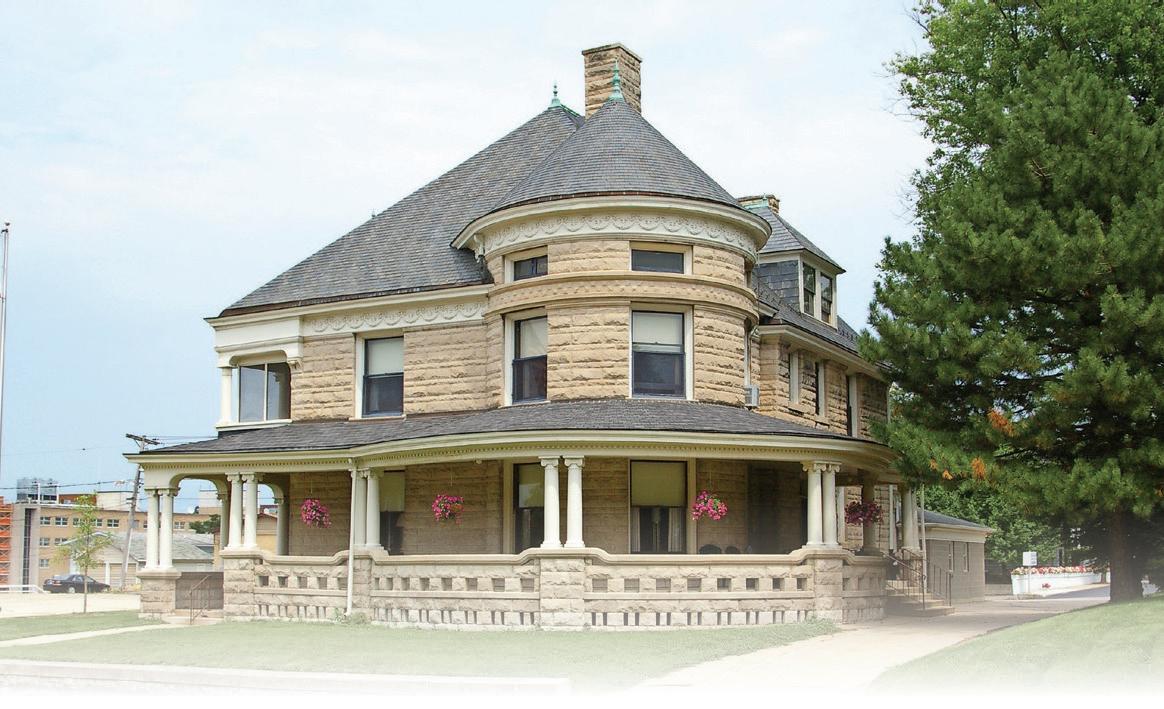

ing with dumbbells, barbells or weight equipment at the gym is too taxing. Using body weight to build strength is a low-intensity option. Squats, wall push-ups, chair push-ups, and resistance bands can be used to build strength.
Walking is an unsung hero in the fitness realm. According to Better Health Channel, just 30 minutes of walking every day can increase cardiovascular fitness, strengthen bones, reduce excess body fat, and boost muscle power and endurance. Walking is lowimpact and less taxing on joints than jogging or running.
Dancing is widely seen as a fun activity, but it also provides a great cardiovascular workout. Local community centers and even some fitness facilities offer age-specific dancing classes, which the AARP notes are great for individuals who want to build core strength, improve bone health and protect their heart. The Whiteside County Senior Center hosts free line dancing classes. Call 622-9230 for information.




